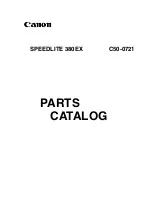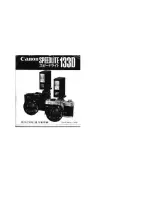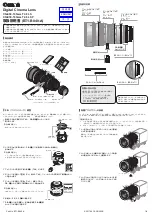
Section 3 - At the Telescope with a CCD Camera
Page 39
3.9.2. Sub-Frame Readout in Focus
The Focus command offers several frame modes for flexibility and increased frame throughput.
As previously discussed, the Full frame mode shows the entire field of view of the CCD with
the highest resolution, digitizing and displaying all pixels.
The "Dim" mode offers the same field of view but offers higher frame rates by reducing
the image's resolution prior to downloading. The resolution is reduced by combining a
neighboring block of pixels into a "super pixel". This reduces the download and display times
proportionately, as well as improving sensitivity. It is great for finding and centering objects.
The Planet mode is suggested if high spatial resolution is desired for small objects like
planets. The Planet mode allows you to select a small sub-area of the entire CCD for image
acquisition. The highest resolution is maintained but you don't have to waste time digitizing
and processing pixels that you don't need. Again, the image throughput increase is
proportional to the reduction in frame size. It can be entered from Auto mode.
Another aspect of the Focus command and its various modes is the Camera Resolution
2
setting in the Camera Setup command. Briefly, the Resolution setting allows trading off image
resolution (pixel size) and image capture time while field of view is preserved. High resolution
with smaller pixels takes longer to digitize and download than Low resolution with larger
pixels. The cameras support High, Medium, Low and Auto resolution modes. The Auto mode
is optimized for the Focus command. It automatically switches between Low resolution for
Full frame mode to provide fast image acquisition, and High resolution for Planet mode to
achieve critical focus. While Auto resolution is selected all images acquired using the GRAB
command will be high resolution.
3.9.3. Track and Accumulate
An automatic Track and Accumulate mode (SBIG patented) is available in CCDOPS which
simplifies image acquisition for the typical amateur with an accurate modern drive. These
drives, employing PEC or PPEC technology and accurate gears, only need adjustment every 30
to 120 seconds. With Track and Accumulate the software takes multiple exposures and
automatically co-registers and co-adds them. The individual exposures are short enough such
that drive errors are not objectionable and the accumulated image has enough integrated
exposure to yield a good signal to noise ratio.
Operationally the camera will take an exposure, determine the position of a preselected
star, co-register and co-add the image to the previous image, and then start the cycle over
again. The software even allows making telescope corrections between images to keep the
object positioned in the field of view. The resulting exposure is almost as good as a single long
exposure, depending on the exposure used and sky conditions. The great sensitivity of the
CCD virtually guarantees that there will be a usable guide star within the imaging CCD's field
of view. This feature provides dramatic performance for the amateur, enabling long exposures
with minimal setup!
2
The Resolution setting in the Camera Setup command combines pixels before they are digitized. This
is referred to as on-chip binning and offers increases in frame digitization rates.
















































